Abstract
The distribution and density of Ae. aegypti and Ae. albopictus in Singapore were assessed from extensive larval surveys carried out from 1966 to 1968 to evaluate their respective roles in the epidemiology of dengue haemorrhagic fever and to study their ecology in the urban areas. Ten urban areas where the majority of dengue haemorrhagic fever cases occurred were surveyed.
The results showed that both species were common in the city, with Ae. aegypti being the dominant species. The distribution of Ae. aegypti was more uniform and related to the prevailing housing types and conditions. Its premise index was highest in slum houses, intermediate in shop houses, and lowest in multistorey flats. Ae. albopictus, on the other hand, did not seem to be related to the prevailing housing type in its distribution but tended to be more widespread in areas with open spaces.
The larval density index (the average number of larvae per housing unit) was higher for Ae. aegypti than for Ae. albopictus, in agreement with the relative densities shown by their premise indices. The larval density index correlated well with the premise index and correlated best with the infested-receptacle index. For practical purposes, the most suitable, convenient, and reliable measure of density of Ae. aegypti population seems to be the infested-receptacle index.
An attempt was made to estimate the rate of dispersal of Ae. aegypti from a stable population to an adjacent area of multistorey flats. The rate of dispersal, estimated from the premise index and the larval density index, was approximately 2% per year of the ”donor” population.
Full text
PDF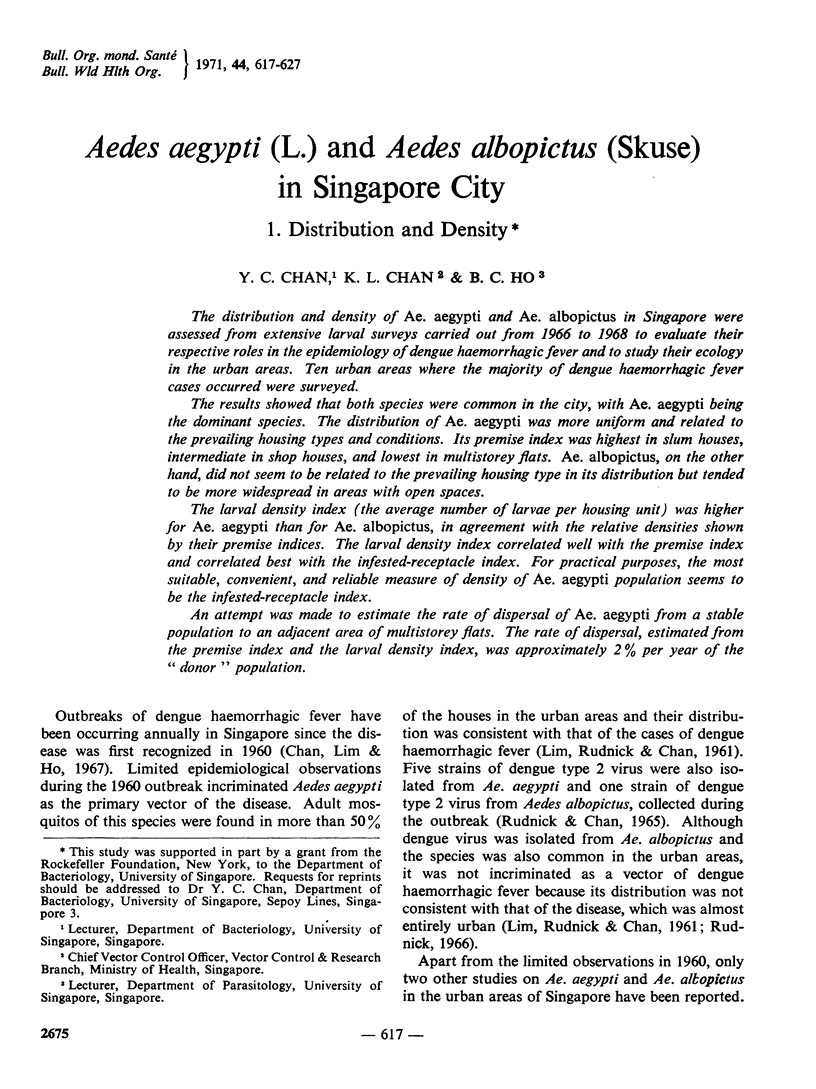
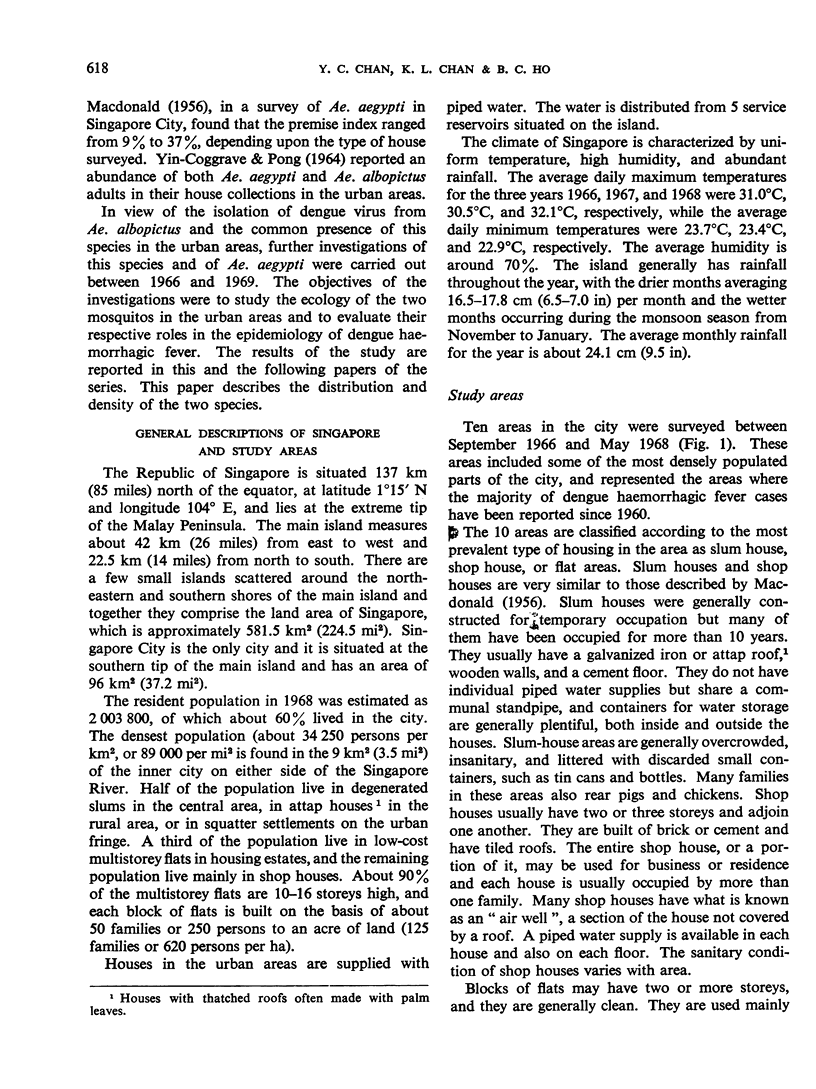
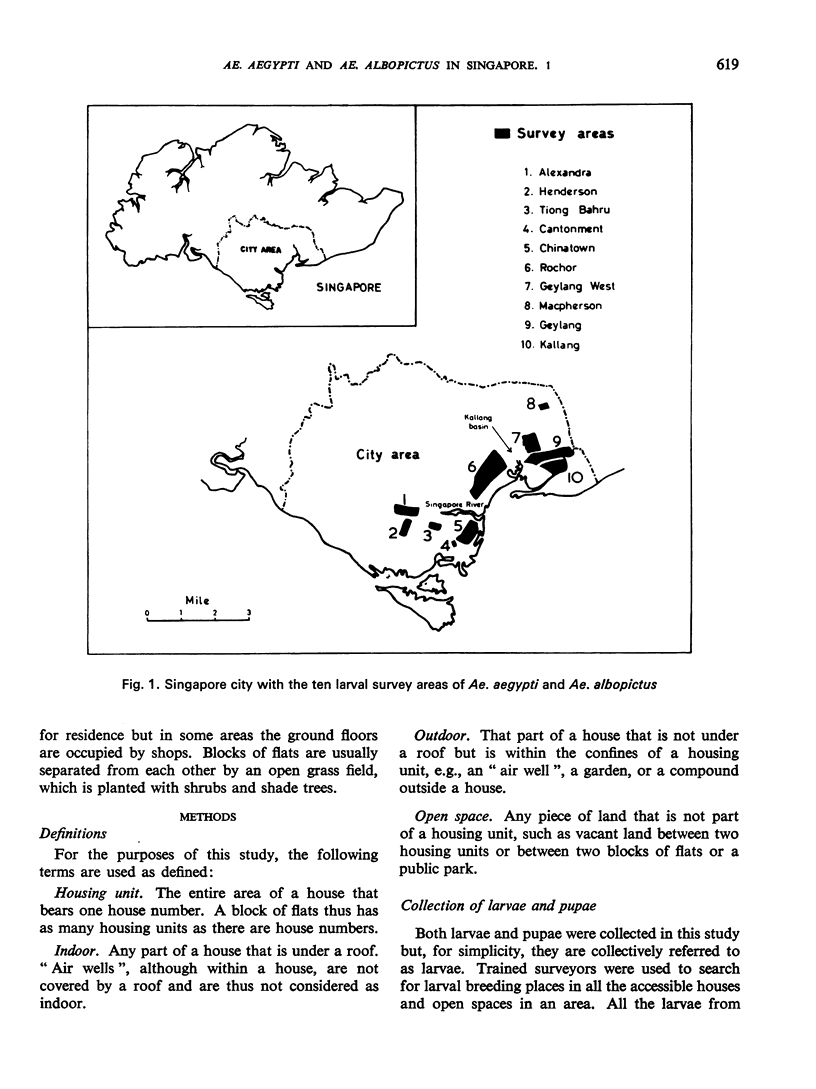
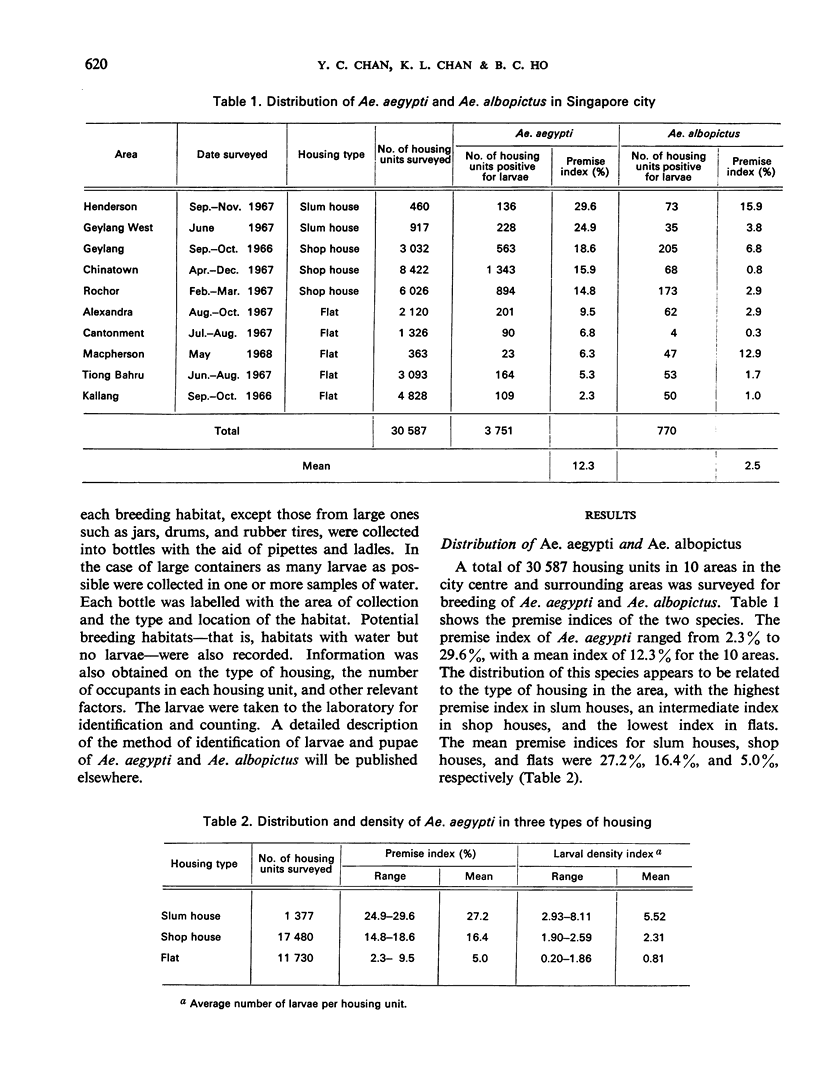
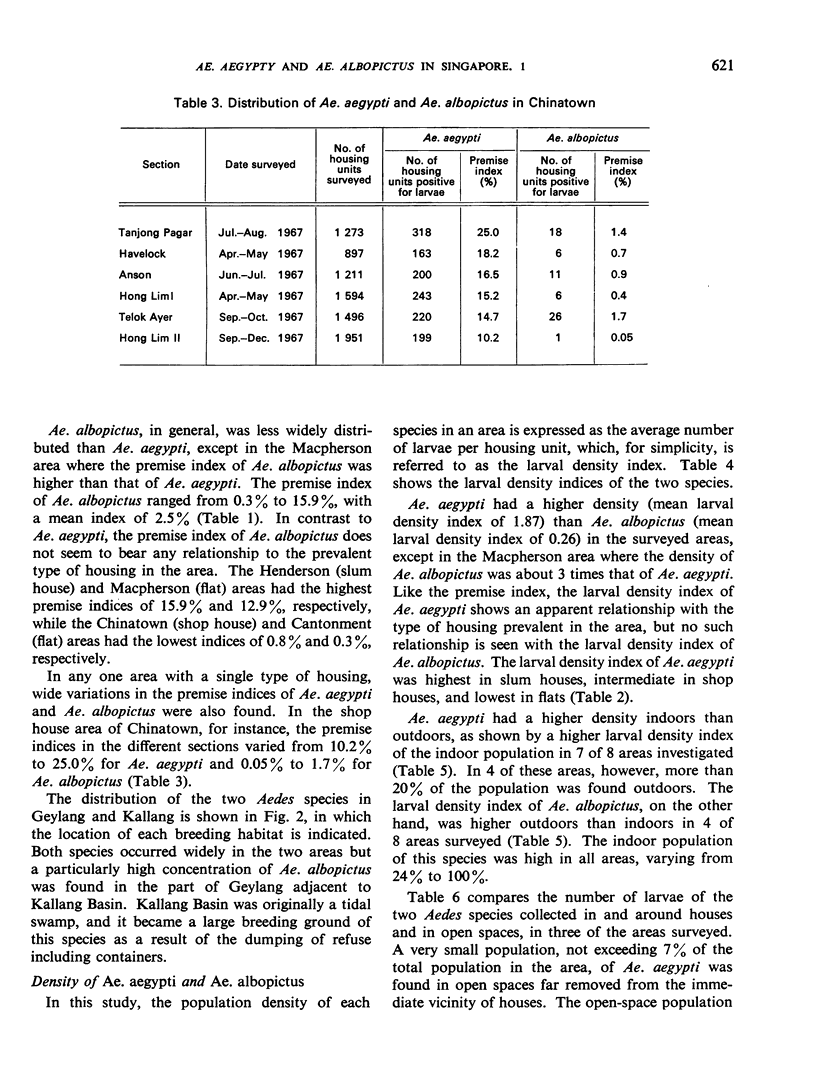

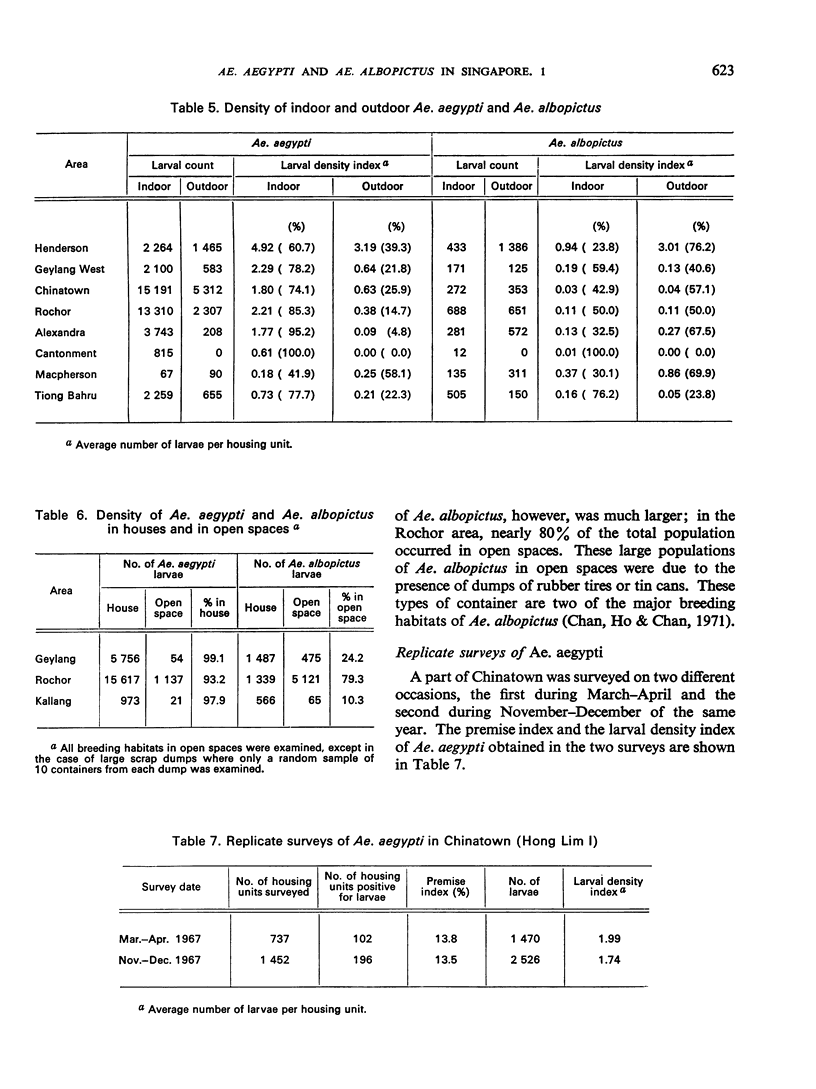
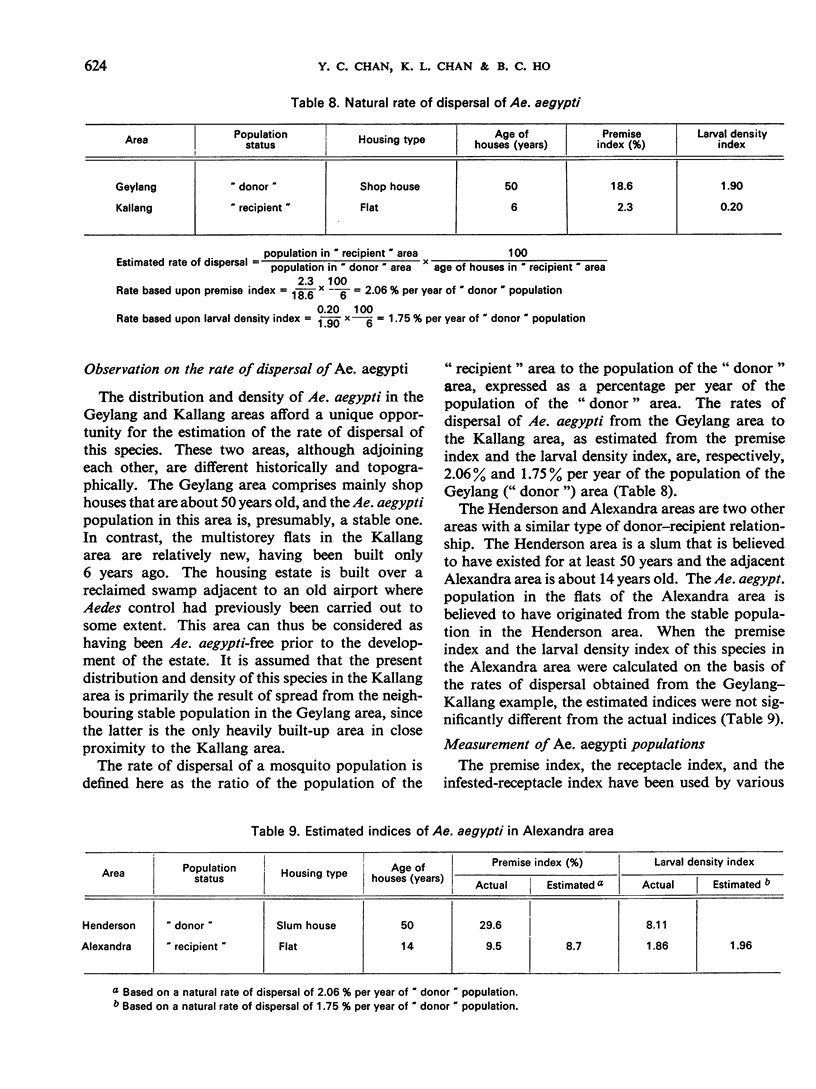
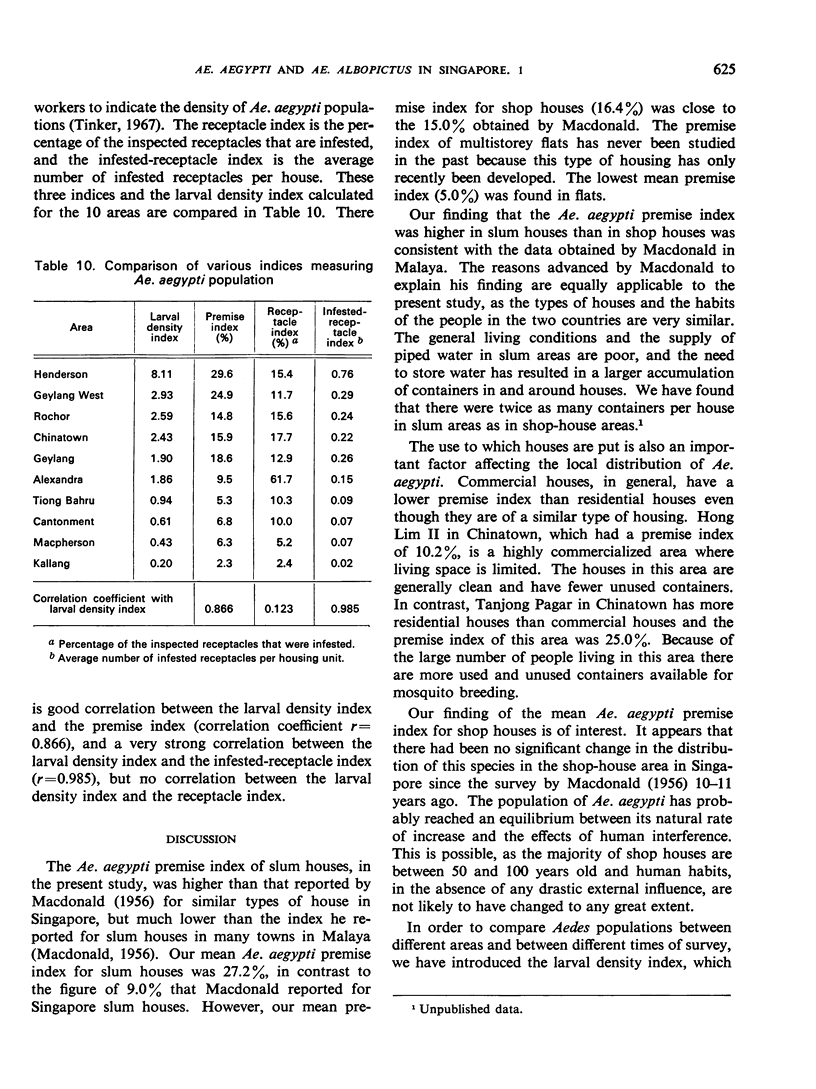
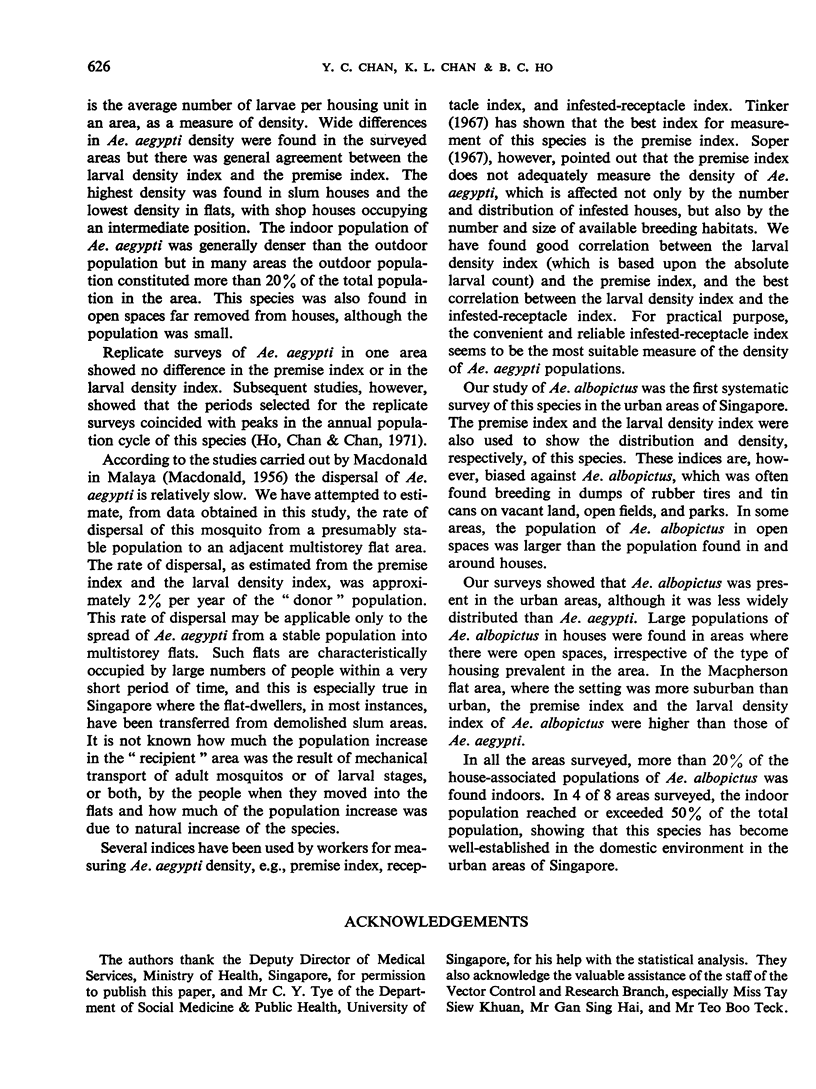
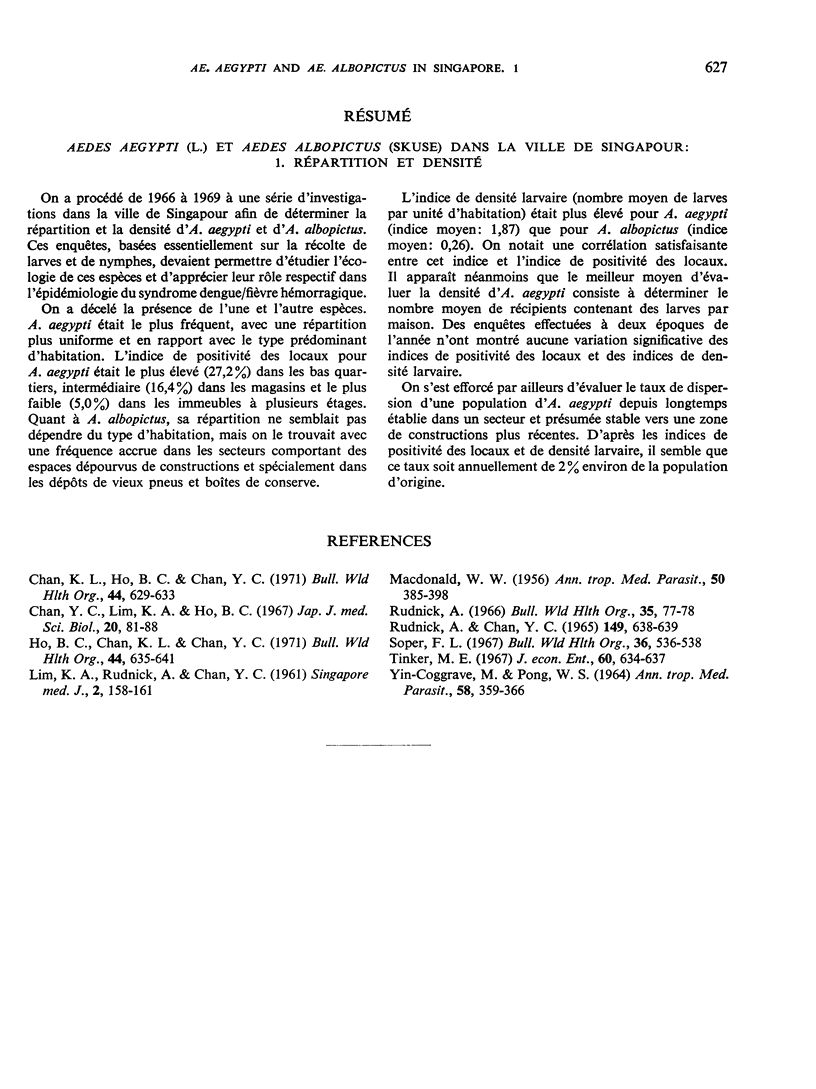
Selected References
These references are in PubMed. This may not be the complete list of references from this article.
- Chan K. L., Ho B. C., Chan Y. C. Aedes aegypti (L.) and Aedes albopictus (Skuse) in Singapore City. 2. Larval habitats. Bull World Health Organ. 1971;44(5):629–633. [PMC free article] [PubMed] [Google Scholar]
- Chan Y. C., Lim K. A., Ho B. C. Recent epidemics of haemorrhagic fever in Singapore. Jpn J Med Sci Biol. 1967 Dec;20 (Suppl):81–88. [PubMed] [Google Scholar]
- Ho B. C., Chan K. L., Chan Y. C. Aedes aegypti (L.) and Aedes albopictus (Skuse) in Singapore City. 3. Population fluctuations. Bull World Health Organ. 1971;44(5):635–641. [PMC free article] [PubMed] [Google Scholar]
- LIM K. A., RUDNICK A., CHAN Y. C. Recent studies of haemorrhatic fevers in Singapore. Singapore Med J. 1961 Dec;2:158–161. [PubMed] [Google Scholar]
- MACDONALD W. W. Aëdes aegypti in Malaya. I. Distribution and dispersal. Ann Trop Med Parasitol. 1956 Dec;50(4):385–398. [PubMed] [Google Scholar]
- Rudnick A., Chan Y. C. Dengue Type 2 Virus in Naturally Infected Aedes albopictus Mosquitoes in Singapore. Science. 1965 Aug 6;149(3684):638–639. doi: 10.1126/science.149.3684.638. [DOI] [PubMed] [Google Scholar]
- Soper F. L. Dynamics of Aedes aegypti distribution and density. Seasonal fluctuations in the Americas. Bull World Health Organ. 1967;36(4):536–538. [PMC free article] [PubMed] [Google Scholar]
- Tinker M. E. Measurement of Aedes aegypti populations. J Econ Entomol. 1967 Jun;60(3):634–637. doi: 10.1093/jee/60.3.634. [DOI] [PubMed] [Google Scholar]
- YIN-COGGRAVE M., PONG W. S. A STUDY OF THE MOSQUITO VECTORS OF VIRUSES IN SINGAPORE. Ann Trop Med Parasitol. 1964 Sep;58:359–366. doi: 10.1080/00034983.1964.11686257. [DOI] [PubMed] [Google Scholar]


